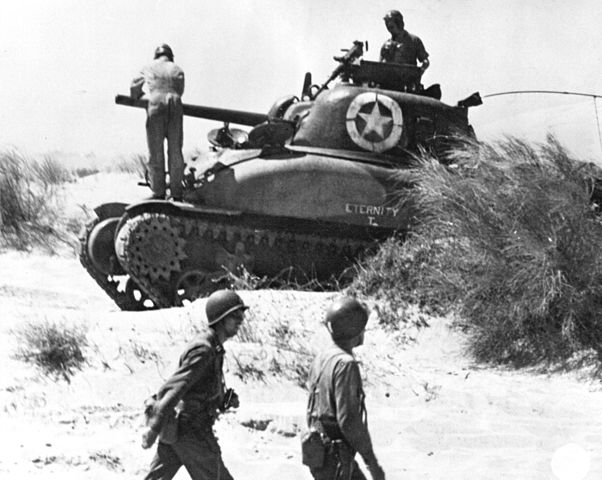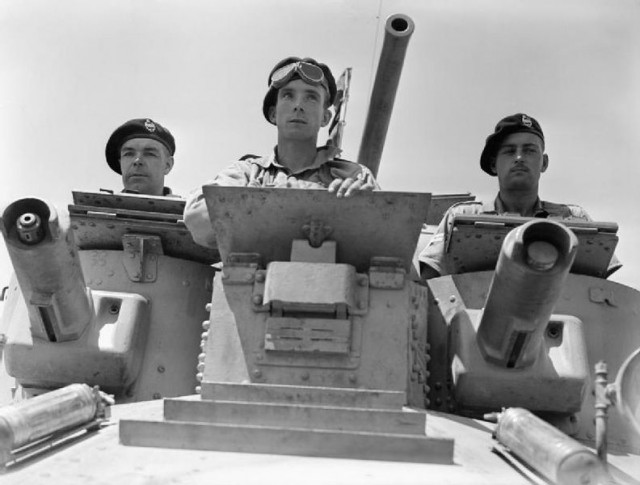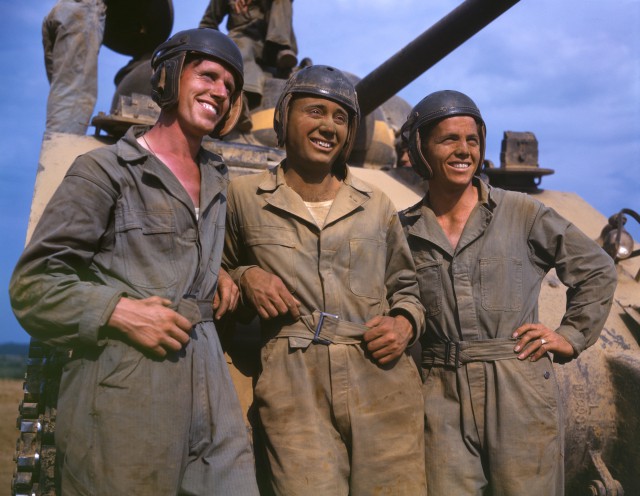Tanks have certainly played a large role in mechanising modern warfare. Their significance for both the First and Second World Wars cannot be underestimated, and they particularly played an integral part in the move away from the trench warfare of the early 20th Century. What is less well known, however, are the crews who operated these massive machines. In recent years there has been a burgeoning quest for knowledge in the men behind the metal, with films like Fury (2014) that have piqued people’s interest.
Generally speaking, the crews operated in groups of 3 to 5 men – though that is not to say women did not play a part. It is widely known that some Russian T-34 tanks were operated by female soldiers. Intotheblue, who specialise in Tank Experiences in the UK, took a look at the people who rode these weapons of war into battle; and the different roles that they played.
The Commander
This person is the leader of the crew. Acting as the gel that binds the other components, the commander is the person in charge of the overall actions of the tank. It’s his responsibility to direct movements, give orders for engaging the enemy and decide what tactics to employ on the battlefield.
This was a particularly straining job, particularly as the commander also had to maintain links with the squadron leader and execute order, whilst directing his own crew. This proved an extremely though job, as at times they had to work with minimal information.
Tank commander Sgt. Trevor Greenwood – of the 9th Battalion Royal Tank Regiment – gives us an insight into the fatigue and uncertainty he and his men experienced in the summer of 1944: ‘…speculation about our next move. Will we be withdrawn? Or sent in again? We need some rest: everyone is worn out, mentally and physically[1].
The Driver
The driver is responsible for controlling the tank when travelling and, most importantly, for manoeuvring during battle. This wasn’t as easy as it sounds, given that the gear set-up of a tank in the 1940s was more ‘akin to that of tractor than an automobile’[2]. This made it ridged and difficult to turn; and for this reason some crews would have an assistant driver to give the main man an extra pair of eyes. As well as moving the tank, he also had to double up as a mechanic.
Out on operation, the driver didn’t have access to the tools, personnel or parts necessary to remedy damage taken during battle. It was up to the driver to, using whatever he had available to him, keep the tank running. One of the biggest challenges in this respect was not being hit by bullets or RPGs, but rats who would chew on the electrical wiring causing all manner of problems.
Interestingly, during World War Two there was a great disparity between the qualities of training provided to tank drivers of different armies. For example at the start of the war German tank driver training ‘was very thorough for new recruits’; whereas the level of training ‘continued to be a problem for the Red Army well into 1942’[3].
The Gunner
One of the toughest jobs in a tank crew is that of the gunner. While he is responsible for the firing of the main gun, this is only 40% of the job. The real skill lies in aiming, and getting your target locked onto sight. This might sound simple, but when it’s a moving target under the pressure of explosions, shouting and the roar of the engine – it’s a whole different ball park.
On top of all this, he had to pay strict attention to his superior’s instructions. As John Irwin, an American tank gunner who fought in the allied invasion of Europe, bluntly put it his Commander Joe would ‘pick the targets, and I would try and hit them’[4]. So self-control and constantly being alert are essential components of this role, a mean feat when you consider the immense pressure they were under.
Ammunition Loader
A tanks ability to replace its ammunition can give it a significant advantage over the enemy, which is why there was a crew member who was constantly working to make sure the guns were loaded. The quicker a gun can be reloaded, the more it can fire – which makes this task very important. Relatively speaking, however, this job ‘required less skill than other’ roles and as a result was usually given ‘to the less experienced members of the crew’[5].
That is not to say that it wasn’t a dangerous job. In American M4 Tanks ‘like those used by the 4th armoured division in 1944’[6] the loader was the only member who of the team that didn’t have an escape hatch. In fact, if the tank had a direct hit or was set on fire; the loader ‘had to crawl under the gun’ to exit the tank. Or, in a worst case scenario, ‘if either the commander or the gunner was incapacitated, this could block the way and trap the loader inside.’[7].
Some tanks during the 1940s did have an autoloader feature, which scrapped the need for a full-time crew member. That said, their use was mainly limited to Soviet and French tanks; and was not widely incorporated into British and American designs – who preferred human loaders.
- [1] D-Day to Victory: The Diaries of a British Tank Commander
- By Sgt Trevor Greenwood
- [2] US Army Tank Crewmen 1941-45: European Theater of Operations (ETO) 1944-45
- By Steven Zaloga, Howard Gerrard p23
- [3] Tank Warfare on the Eastern Front 1941-1942: Schwerpunkt
- By Robert Forczyk p35
- [4] Another River, Another Town: A Teenage Tank Gunner Comes of Age in Combat–1945
- By John P. Irwin
- [5] US Army Tank Crewmen 1941-45: European Theater of Operations (ETO) 1944-45
- By Steven Zaloga, Howard Gerrard p23
- [6] Ibid.
- [7] Ibid p24.


